Whether you can barely touch your toes or successfully hold a one-legged backbend, you can do yoga. The mind-body practice focuses on connecting breath to movement while flowing through a series of poses, and since there are so many different styles of yoga, there are options for beginners, veterans and everyone in between.
Beyond helping you build strength and flexibility, yoga is all about clearing your mind and recentering yourself, making it beneficial for anyone, experts told us. If you’re interested in establishing your practice, we talked to yoga teachers about how to start and what to know beforehand. With expert guidance in mind, we also put together a list of yoga apparel and props to use during classes, whether you’re practicing at home or in a studio. All the products we recommend below are top rated, Select Wellness Award winners or staff favorite items.
SKIP AHEAD Best yoga apparel| Best yoga props
Our top picks
- Best yoga mat: Alo Warrior Mat
- Best yoga towel: Gaiam No-Slip Yoga Towel
- Best yoga blocks: Bala Balance Blocks
- Best yoga bolster: Hugger Mugger Pranayama Yoga Bolster
- Best yoga blanket: Manduka Cotton Yoga Blanket
- Best yoga strap: Trideer Yoga Strap
- Best yoga wheel: Chirp Wheel
What to wear for yoga
Comfort is key when it comes to yoga apparel, experts told us. “You should be able to move around in your clothes without having to constantly adjust them,” says Ansley Davis, a master trainer and yoga teacher at YogaSix. “The last thing you want to be worried about is pulling up your leggings and putting your shirt back into place.”
Bulky or baggy clothing isn’t ideal since it can restrict your movement, and it’s important to be able to stretch and move freely into positions, says Eve Chrust, a yoga instructor at Obé Fitness. Thus, proper yoga attire includes leggings, shorts with built-in liners, T-shirts, tank tops and sports bras, experts told us.
As for footwear, Chrust recommends doing yoga barefoot. It allows you to be more connected with the earth and gives you control over foot movements, she says. However, you can wear grippy socks if you prefer. Toeless socks are also an option — they cover the tops and bottoms of your feet and heels to keep them warm, but leave the toes exposed so you can spread them out and grip the floor.
Yoga apparel to shop
Select earns a commission on purchases through these links.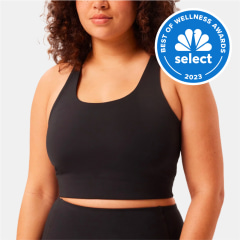
Girlfriend Collective Paloma Racerback Bra
$46.00
Girlfriend
$46.00
Amazon
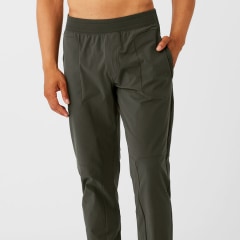
Alo Men’s Co-Op Pant
$138.00
Alo
$138.00
Nordstorm
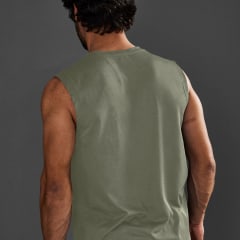
Beyond Yoga Featherweight Freeflo Men’s Muscle Tank
$48.99
$58.00
Beyond Yoga
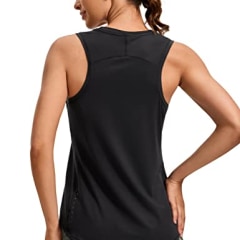
Crz Yoga Racerback Sleeveless Workout Tank Top
$22.00
Amazon
$22.00
CRZ Yoga
What are common yoga props and their uses?
Yoga props add value to a practice, but they’re not required by any means, says Davis. The only thing required for yoga is your body, which makes it appealing to many people who don’t want to gather a bunch of equipment or leave their home to enjoy a workout. With that being said, yoga props can support you or challenge you, depending on how you use them, and they add variety to a practice. Below are a few of the most common yoga props experts think you should know about.
Yoga mat
When shopping for a yoga mat, think about what’s going to work well in your environment, especially if it’s at home. Think about how much space you have to roll a mat out, and where are you going to store it? Also consider what type of surface you’re going to use the mat on. Yoga studios usually have a springy, cushioned floor that offers support in addition to your mat. But at home, you’re likely placing your mat on hard floors, which calls for a thick, highly cushioned option, or you’re laying your mat on the carpet, which may require something with more grip so it doesn’t slide around. With that being said, pay attention to a mat’s thickness while shopping, as well as the material it’s made from.
Some brands also make travel yoga mats that don’t offer as much cushioning as standard models, but they’re lightweight, easy to fold up and fit neatly in a suitcase, says Davis. She brings it on trips and says it doesn’t take up much space in her carry-on luggage.
If you’re bringing your yoga mat to classes, I recommend buying a mat sling or bag. Both accessories make transporting your yoga mat easier by preventing it from unfolding and providing a handle to throw over your shoulder or hold. Since I walk to yoga classes in New York City, carrying it with my sling or bag is very helpful, and it’s also convenient if I’m taking my mat in and out of a car.
Yoga mats to shop
Select earns a commission on purchases through these links.
Alo Yoga Warrior Mat
$128.00
Alo
$100.00
Net-A-Porter
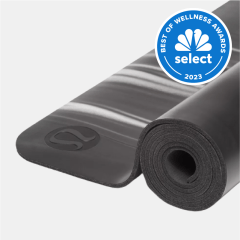
Lululemon Reversible Mat 5mm
$49.00
$78.00
Lululemon
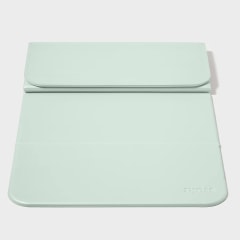
Stakt Folding Yoga Mat
$86.00
Stakt
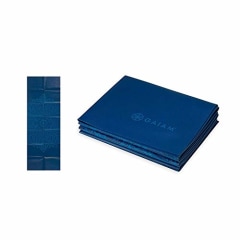
Gaiam Foldable Travel Yoga Mat
$20.16
$24.98
Amazon
$21.06
$24.98
Walmart
$24.98
GetACTV
Yoga towel
It’s important for your body to be warm while doing yoga so your muscles can be loose, stretchy and flexible, says Chrust. If you’re cold, muscles and joints tend to stiffen up, making it more difficult to move. Because of this, yoga studios tend to be warm, and if you’re doing a fast-paced or challenging class, you can break a sweat. Some studios also offer “hot yoga” classes, where the temperature of the room is set between 90 and 100 degrees Fahrenheit and quite humid.
As you sweat, you may find it increasingly challenging to grip your mat — that’s where a yoga towel comes in. You roll it out over your mat and its absorbent fabric soaks up sweat, giving you a non-slip surface to place your hands and feet. There’s also usually a silicone pattern on the bottom of the towel to keep it in place on your mat.
Yoga towels to shop
Select earns a commission on purchases through these links.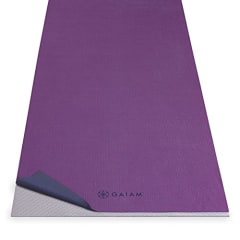
Gaiam No-Slip Yoga Towel
$27.64
$29.98
Amazon
$19.94
Walmart
$34.98
GetACTV
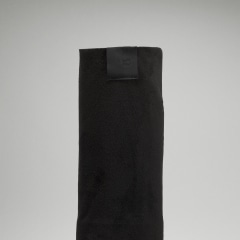
Lululemon The Towel
$38.00
Lululemon
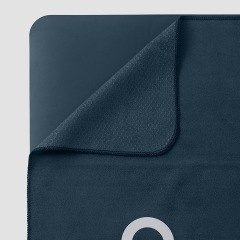
Alo Grounded No-Slip Towel
$68.00
Alo
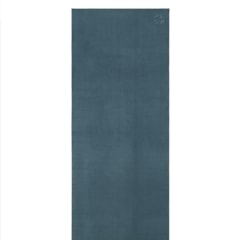
Manduka eQu Yoga Mat Towel
$36.71
$42.00
Amazon
$42.00
Manduka
$45.00
Dick’s Sporting Goods
Yoga blocks
If you’re only going to invest in one yoga prop, make it a yoga block, says Davis. It’s best to have two, but one will do the trick. Yoga blocks help you level up a pose and make it more intense, or level down a pose and modify it depending on your limitations, says Chrust. For example, you can put a yoga block between your knees during chair pose and press your legs together to challenge your muscles, or place it under your tailbone for added support in bridge pose. As you position yoga blocks at different angles and heights, you engage different muscles and adjust your range of motion, says Davis.
Yoga blocks to shop
Select earns a commission on purchases through these links.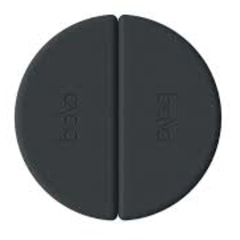
Bala Balance Blocks
$49.00
Bala
$49.00
Revolve
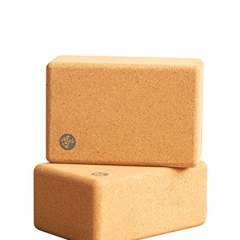
Manduka Cork Yoga Block
$44.00
Amazon
$46.00
Manduka
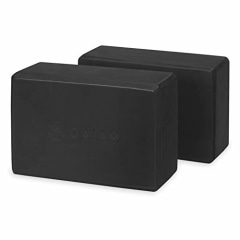
Gaiam Essentials Yoga Block
$26.68
Amazon
$16.98
GetACTV
$16.98
Everyday Yoga
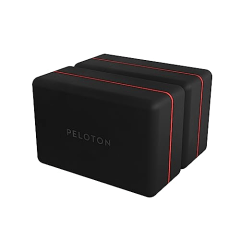
Peloton Yoga Block
$22.50
$30.00
Amazon
$30.00
Peloton
Yoga bolster
Yoga bolsters cushion bony parts of your body when you’re doing floor-based poses like a reclined twist, supported backbend and savasana, also known as corpse pose and final resting pose. They’re commonly used in slower paced, stretching-focused classes, as well as meditation practices. If you don’t want to buy a yoga bolster and are practicing at home, a dense pillow is a great alternative.
Yoga bolsters to shop
Select earns a commission on purchases through these links.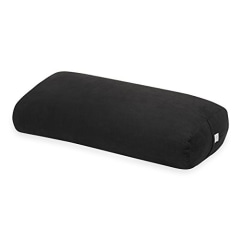
Gaiam Yoga Bolster
$37.98
$44.98
Amazon
$44.98
GetACTV
$70.00
Carbon38
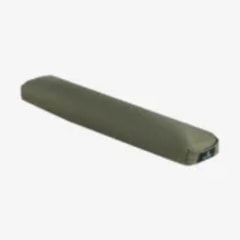
Hugger Mugger Pranayama Yoga Bolster
$58.95
Amazon
$43.99
Hugger Mugger
$58.95
Everyday Yoga
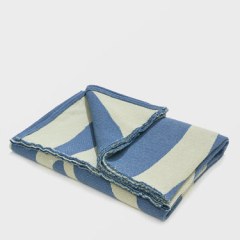
Yoga Hustle The Bolster
$110.00
Yoga Hustle
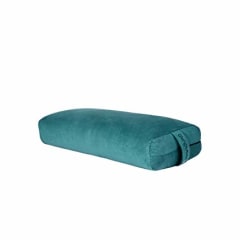
Manduka Yoga Bolster Pillow
$78.00
Amazon
$78.00
Zappos
$78.00
Zappos
Yoga blankets
Similarly to bolsters, yoga blankets also add cushioning for floor-based poses when you roll or fold them up. You can put them under your knees while kneeling or under your forearms while doing a forearm plant or in dolphin pose, for example. You can also cover yourself with a yoga blanket while meditating, doing breathing exercises or in savasana to add warmth and comfort to your practice, says Chrust.
Yoga blankets to shop
Select earns a commission on purchases through these links.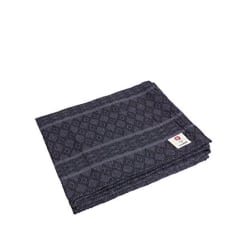
Manduka Cotton Yoga Blanket
$52.00
Amazon
$52.00
Manduka
$52.00
Everyday Yoga
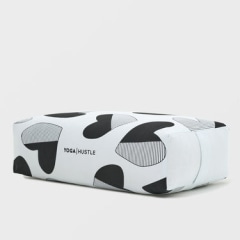
Yoga Hustle The Blanket
$225.00
Yoga Hustle
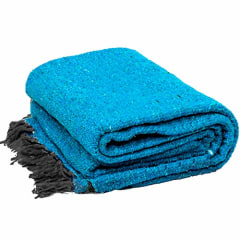
Open Road Goods Handmade Yoga Blanket
$36.99
Amazon
Yoga strap
Yoga straps help with stretching, flexibility and releasing tension. They’re main function is to bring your limbs closer to your body without having to reach for them. For example, if you’re seated in a forward bend and can’t touch your toes, you can put the strap around your feet and hold either end, pulling yourself toward your toes until you feel a stretch in the back of your legs. You can also hold the strap behind you to stretch your back, shoulders and chest.
Yoga straps to shop
Select earns a commission on purchases through these links.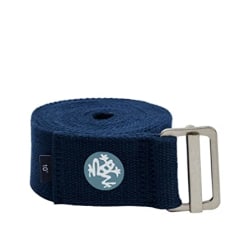
Manduka Align Yoga Strap
$20.00
Amazon
$20.00
Zappos
$22.00
Manduka
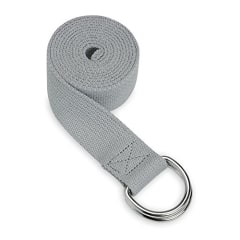
Gaiam Yoga Strap
$9.99
Amazon
$7.98
GetACTV
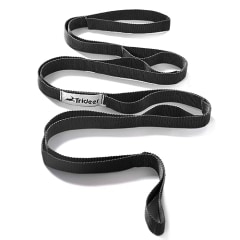
Trideer Yoga Strap
$9.99
$11.99
Amazon
$7.99
$14.58
Trideer
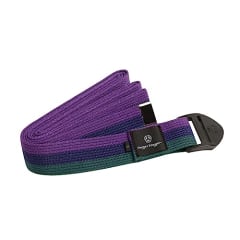
Hugger Mugger Cinch Cotton Yoga Strap
$15.95
Amazon
$16.95
Backcountry
$16.95
Everyday Yoga
Yoga wheel
Once you have a few yoga classes under your belt and are acquainted with other props, you can experiment with a yoga wheel. It looks similar to a hamster wheel without the stand, Davis says. The circular prop is a stretching aid that can help increase flexibility, and it has traction around its perimeter to prevent it from slipping while you’re using it. You can place it under your back while lying down and as you stretch over it, the prop opens up the chest and upper back — Davis does this after waking up as well as in her yoga practice. Using a yoga wheel is an especially great way to build extension in the spine and work toward back bends, plus you can do balancing poses with it, she says.
Yoga wheels to shop
Select earns a commission on purchases through these links.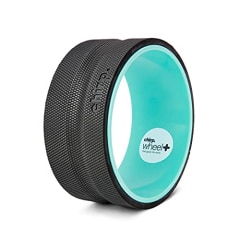
Chirp Wheel
$42.49
$54.99
Amazon
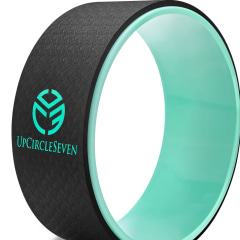
UpCircleSeven Yoga Wheel
$43.97
Amazon
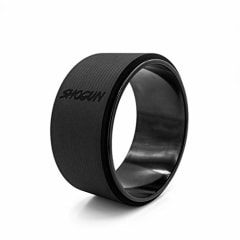
Shogun Yoga Wheel
$29.99
Amazon
Frequently Asked Questions
What is yoga?
The goal of yoga is to help you connect to your mind, body and breath, experts told us. There are many different styles of yoga, all of which combine moving through a series of poses with breath work. Some styles also incorporate meditation.
What are the benefits of yoga?
The physical benefits of yoga include increased flexibility and strength. It also releases tension and encourages proper alignment of the bones and muscles. But what sets it apart from a lot of other movement modalities is the equal focus on mindfulness, which involves honing in on how your mind and body feels in the present moment. While doing yoga, you have to slow down, breathe and concentrate on where and how you want to move your body, forcing you to clear your mind, says Chrust. You can carry that calming, feel-good sensation derived from yoga off the mat, centering you in other parts of your life, she says.
Who can do yoga?
Anyone can do yoga regardless of their age, fitness level and experience. Davis says people often think they’re not flexible enough to do yoga, but that’s a skill you work on by taking classes. If you’re a beginner yogi, approach your practice without expectations and don’t compare yourself to others, says Chrust. Yoga is about meeting yourself where you are and connecting your mind and body — that looks different for everyone, and you can personalize your practice depending on your goals or how you’re feeling when you step onto the mat, says Chrust.
What are the different styles of yoga?
“There are so many types of yoga, so it’s kind of like picking your favorite ice cream flavor,” says Davis. “Especially for someone who is starting out, the best thing you can do is try different styles and find one that resonates with you.” It may take some time to hit the sweet spot, but the more you take classes, the faster you’ll learn what you gravitate toward.
To give you an idea of what’s out there, we asked experts to give us an overview of the most common styles of yoga you’ll likely see on a studio’s schedule or offered by fitness apps . Many other styles of yoga branch out from these two, so it’s helpful to get a sense for them.
Vinyasa yoga
Vinyasa yoga focuses on linking breath to movement through a vinyasa flow, meaning a series of connected poses, says Chrust. It involves sun salutations, warrior poses and tree poses, for example. In any vinyasa class, you’ll build strength and stretch, and how much of each you do depends on the type of class. Some are gentle, restful and slower paced, so you’ll stretch more than build strength — you might see these vinyasa classes called a gentle flow or slow flow, and they’re a great entry point for people who have never done yoga before, says Chrust. Others are intense, physically demanding, fast-paced workouts that focus on building strength with moments of stretching — you’ll see these vinyasa classes called power yoga or yoga sculpt, which involves weights.
Restorative yoga
Restorative yoga is a calming practice that focuses on slow, calm, gentle movements and rejuvenating the muscles, says Davis. It’s a stretching-focused class, so you’re less likely to break a sweat or build muscle. It’s floor-based, meaning you’re rarely, if ever, standing. Restorative yoga is a great practice for beginners who have never done yoga before since they’ll learn a few poses and understand how their body feels while doing them. Davis also recommends restorative yoga for anyone who recently recovered from an injury, is postpartum and older individuals. Plus, it’s a perfect compliment for other types of workouts like running, cycling and weightlifting.
How do you clean your yoga mat?
Be sure to read the specific care directions listed on a brand’s website or a product’s packaging before cleaning your yoga mat in case there are any limitations you need to be aware of. With that being said, you can most often spray the mat with a diluted all-purpose cleaner and wipe it down with a microfiber cloth or paper towel, says Davis. It’s best to wipe off your mat after every use, especially if you’re sweating while using it.
Meet our experts
At NBC Select, we work with experts who have specialized knowledge and authority based on relevant training and/or experience. We also take steps to ensure that all expert advice and recommendations are made independently and with no undisclosed financial conflicts of interest.
- Ansley Davis is a master trainer and yoga teacher at YogaSix, which offers yoga classes at studios across the country as well as online.
- Eve Chrust is yoga instructor at Obé, a virtual fitness platform, and a senior instructor at SoulCycle. She has over 15 years of experience in the fitness industry and her certifications include 200 hour registered yoga training, intermediate/advanced mat pilates, pronatal health counselor and holistic health counselor.
Why trust NBC Select?
Zoe Malin is an associate updates editor at NBC Select who writes about fitness, including training shoes, running sneakers, sports bras, pilates rings and fitness apps. For this article, she interviewed two experts about the best yoga props and apparel.
Catch up on NBC Select’s in-depth coverage of personal finance, tech and tools, wellness and more, and follow us on Facebook, Instagram, Twitter and TikTok to stay up to date.
![]() Zoe Malin
Zoe Malin
Zoe Malin is an associate updates editor for Select on NBC News.

